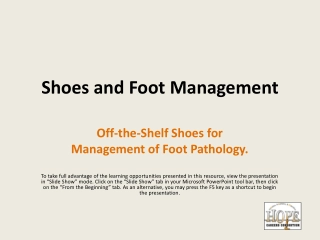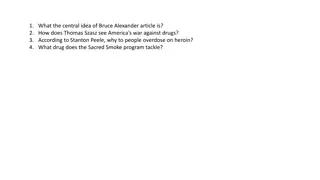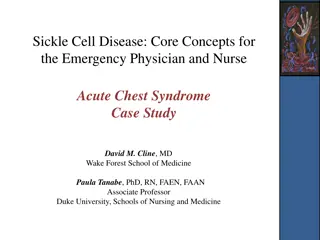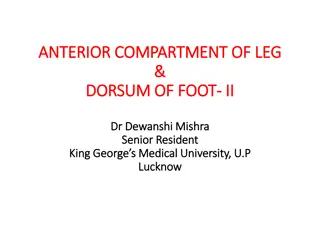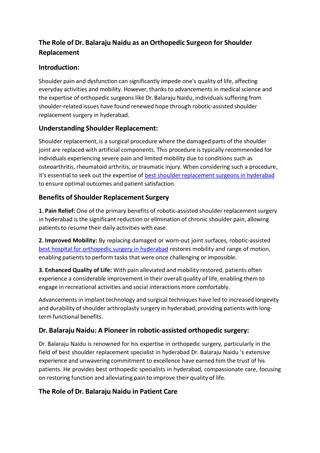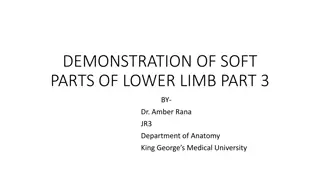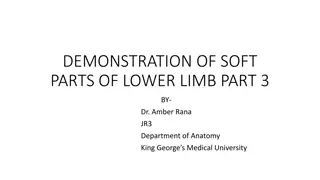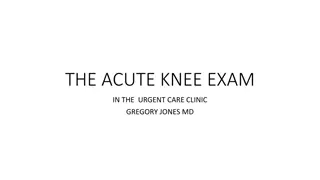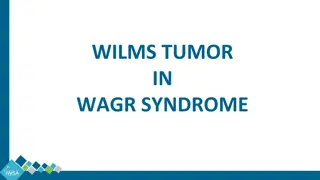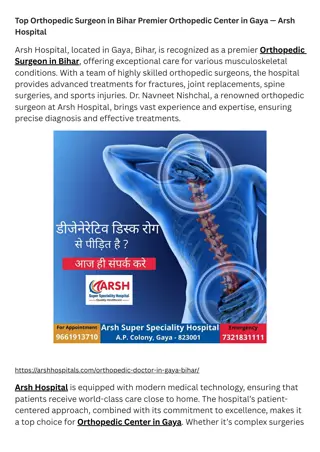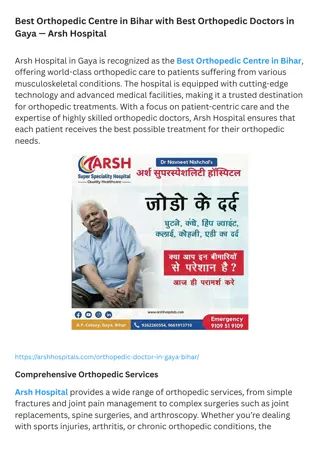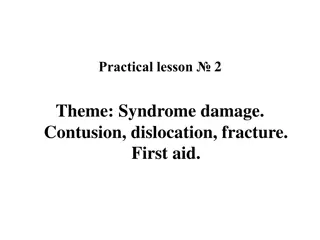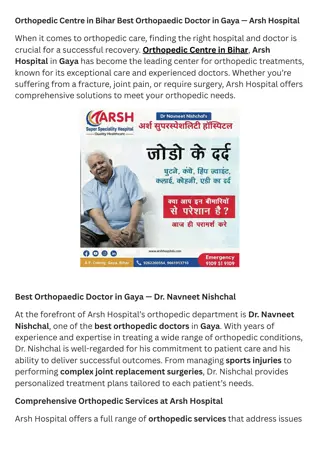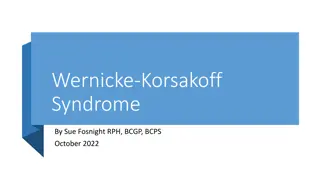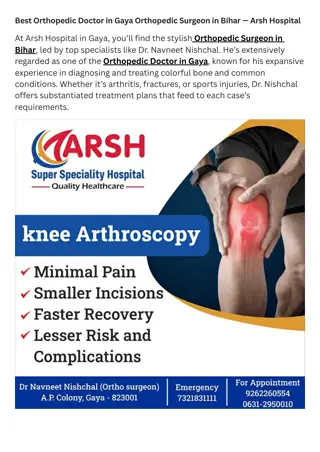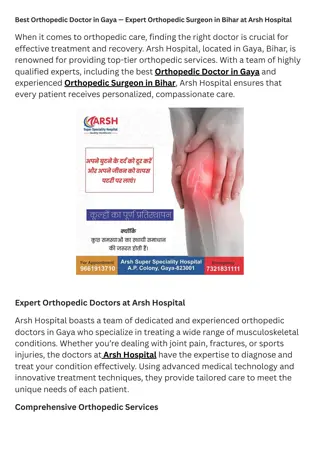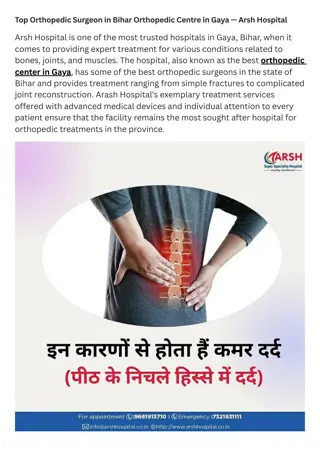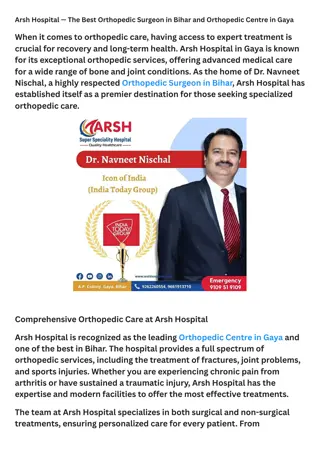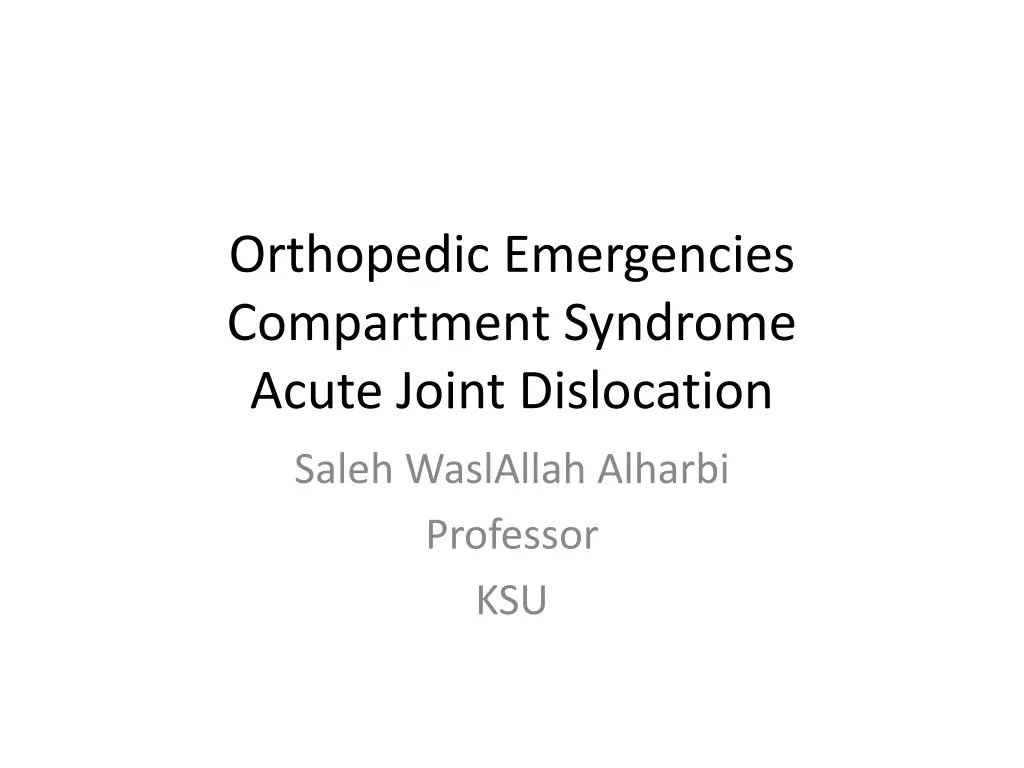
Understanding Orthopedic Compartment Syndrome
Learn about orthopedic emergencies like compartment syndrome, including its pathophysiology, risk factors, diagnosis, and management. Discover the implications of acute joint dislocations and how to identify patients at risk. Explore the importance of maintaining normal blood flow and tissue perfusion to prevent complications.
Download Presentation

Please find below an Image/Link to download the presentation.
The content on the website is provided AS IS for your information and personal use only. It may not be sold, licensed, or shared on other websites without obtaining consent from the author. If you encounter any issues during the download, it is possible that the publisher has removed the file from their server.
You are allowed to download the files provided on this website for personal or commercial use, subject to the condition that they are used lawfully. All files are the property of their respective owners.
The content on the website is provided AS IS for your information and personal use only. It may not be sold, licensed, or shared on other websites without obtaining consent from the author.
E N D
Presentation Transcript
Orthopedic Emergencies Compartment Syndrome Acute Joint Dislocation Saleh WaslAllah Alharbi Professor KSU
Objectives Compartment Syndrome (CS) 1. To explain the pathophysiology of CS. 2. To identify patients at risk. 3. To be able to diagnose and manage CS. 4. To be able to describe the complications of CS.
CS What is compartment?
CS What is compartment? , ,
CS Normal blood flow is impaired. Artery- arteriole- capillary- venule- vein. Tissue perfusion failing.
CS Hypoxia
CS BP 120/80 + - 10 Tissue pressure should be less than diastolic pressure by 30 mm Hg.
CS Definition: Compartment syndrome develops when there is excessive, sustained increase of local tissue pressure in a closed compartment.
CS Risk Factors (edema) Elevated tissue pressure Tense tissues Impaired diffusion / hypoxia Cell damage More swelling , more hypoxia Vicious circle
CS Local causes: - Trauma (crush, fracture open/closed) - Injection - Bleeding - Prolong vascular occlusion (reperfusion inj) - Burns - Venomous bite - IV extravasation - Post op - Bandages
CS General causes: - Hypotension - Head injury
CS Diagnosis - Early Pain out of proportion to injury Pain with stretching fingers / toes Risk factors High index of suspicion Measurement of compartment
Diagnosis Late Numbness, parasthesia, weakness, Paralysis Pulseless Tooooo Late
Diagnosis - S/S Pallor Altered perfusion Diminished pulses or pulselessness Altered capillary refill Palpable fullness or tenseness of a compartment, the forgotten "P" Altered sensibility Pain on passive muscle stretch
CS Management - Initial ( undeveloped) CS Remove any bandages/ cast/ brace Maintain normal BP Keep limb at heart level Regular close monitoring (15-30 min) Avoid sedation, nerve block ( pt feedback)
CS Management - Fully developed CS Above plus Diuretics to flush kidneys Urgent surgical decompression (Fasciotomy)
CS Fasciotomy Decompress all compartments Allows muscles to expand Thus, Reduction compartment pressure Stops further damage Should be done very early If too late, shouldn`t be done
CS Fasciotomy Debridement of all necrotic tissue Second and third debridement needed Skin closure/graft after few days
CS Fasciotomy Indications: 6 hours of ischemia significant tissue injury Worsening limb condition Developed clinical evidence of CS In doubt
CS Complications: - Myonecrosis-----Myoglobinuria----kidney tubular damage - Limb contractures/paralysis/sensation loss
CS Complications: - Leg: Anterior compartment (foot drop) Deep post compartment (clawed toes/anesthesia sole) Volar compartment (acute Volkman s ischemia/contracture)
Acute Joint Dislocation AJD Objectives To describe mechanisms of joint stability To be able to diagnose AJD To know general principles of management To describe possible complications in major joints (shoulder,hip,knee)
AJD Joint stability: - Bony stability Shape of bone ends (ball and socket/flat) - Soft tissues Dynamic stabilizers: Tendons/muscles Static Stabilizers: ligaments/mensci/labrum
Stability Complex synergy leading to FUNCTIONAL stability
AJD Higher energy is needed to dislocate a bony stable joint than a joint with mainly soft tissue stability. Example: Hip and Shoulder
AJD Dislocation of major joint is associated with other injuries.
AJD Risk Major trauma victims Athletes Connective tissue disease patients
AJD When a joint is strained: it may sprain it may fracture it may dislocate it may fracture and dislocate
AJD Some joints dislocate in one or two directions depending on the force,,, (hip) Others may dislocate in different directions (shoulder)
AJD A joint dislocation is described in reference to the distal segment (shoulder dislocation)
Damage to the labrum Bankarts lesion, and capsule. Damage to the head of humerus.
S/S History of trauma Pain and pt is holding limb Inability to use limb Deformity loss of contour Shortening Malalignment Malrotation Check NV status and CS
Diagnosis History and physical exam X ray urgent ( no delay) (special views)
AJD Management principles: Exclude other injuries Pain control Urgent reduction Check stability Check NV after reduction Xray post reduction Protect the joint Rehabilitation Look for late complications
AJD Management: Better with anesthesia. WHY Urgent Closed reduction first If fail open reduction

